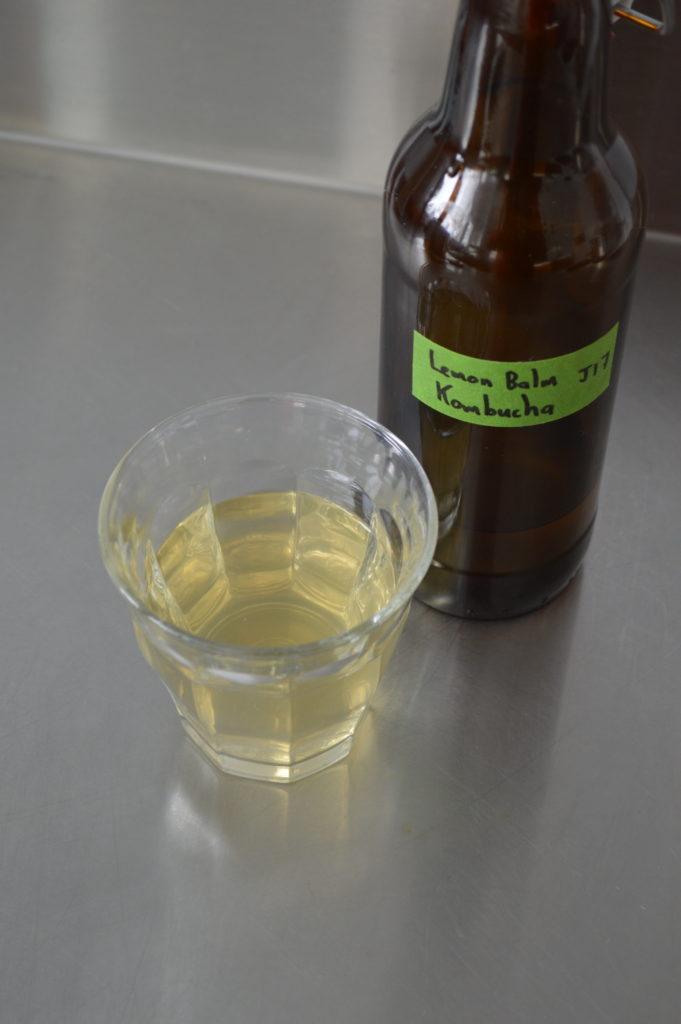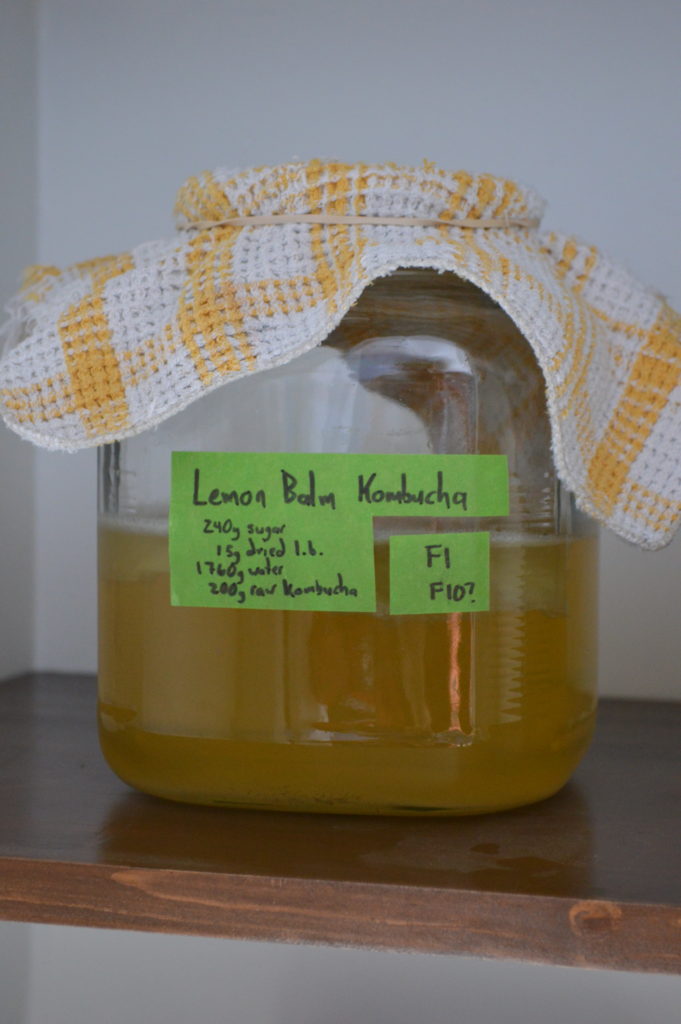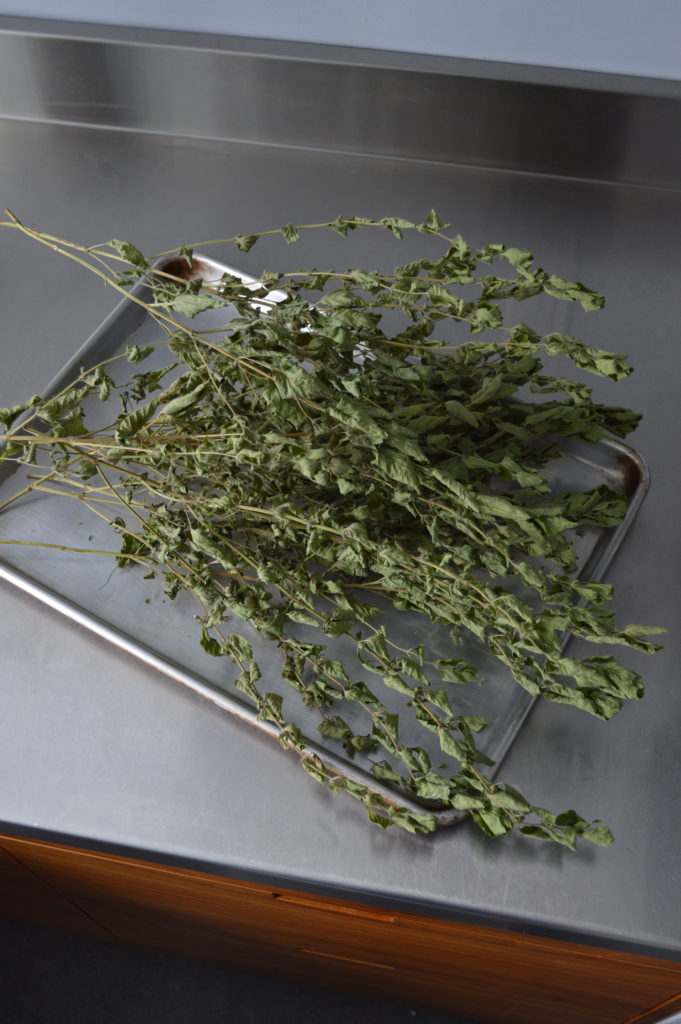
I have come to realize that I am quite resistant to new ideas. For me, new ideas are anything that I didn’t grow up with or study in school. For years I scoffed at modernist techniques and equipment like immersion circulators, xanthan gum, and anti-griddles. (Actually I’m still not convinced of the usefulness of that last one). I was even more vehement in my opposition to hippie fads like veganism, raw food, and more recently, kombucha.
In retrospect it is crazy that I didn’t look into kombucha earlier. For a couple summers I sold homemade raw apple cider vinegar at the 124th Street Grand Market. To my surprise, about 90% of the people who bought vinegar from me were drinking it a tablespoon at a time, as if it were a medicine. Apparently there had been a Dr. Oz episode (or something like that) telling people that the microbes in raw apple cider vinegar could do wonders for your health. So my customers were very interested in health foods, and at every market multiple people would ask me about kombucha. Or they would taste my switchel and say it reminded them of kombucha. I dismissed all this out of hand because it smacked of a new-age snake oil campaign.
Anyways, flash forward a few years, and this week I tried kombucha for the first time. And I read The Noma Guide to Fermentation, which has an entire chapter on kombucha. And shortly after this I made my first batch of homemade kombucha.
The biggest surprise in my research was finding that the acidity in kombucha isn’t just “like” vinegar as the people at the market told me… it is vinegar. Well, it’s acetic acid anyways.
The process for making kombucha is damn-near identical to my vinegar production: make a substrate, backslop 10% of a previous batch, leave to ferment at room temperature. The only difference is that in vinegar production the yeast-driven sugar to alcohol fermentation is kept quite separate from the bacteria-driven alcohol to acetic acid fermentation. So to make vinegar you start with a sugary solution, introduce yeast, ferment to an alcoholic solution, then introduce acetobacter and ferment to an acetic solution. For kombucha both yeast and bacteria are introduced to a sugary solution at the same time in the form of the infamous SCOBY (symbiotic culture of bacteria and yeast). The SCOBY looks and feels remarkably similar to the raft that develops during vinegar fermentation.
You can see the SCOBY floating on the surface of the liquid in the picture below.

This is a SCOBY removed from the liquid.

One thing I am very eager to test out is whether or not you actually need the physical raft of SCOBY to inoculate a new batch. In my vinegar production I simply backslopped raw vinegar and discarded the raft. This was mostly because I found it impossible to transfer the raft between batches and have it float in the new batch. It invariably sank, but a new raft would form in a few days. I’m finding the same thing with kombucha, that the SCOBY raft sinks when transferred. I suspect that there is enough of the culture remaining in the liquid (that’s why we drink it, isn’t it?) that you can fully inoculate a new batch with the raw liquid alone.
Anyways.

My kombucha recipe is based on the Lemon Verbena Kombucha recipe in The Noma Guide to Fermentation. I’ve been using lemon balm, as we grew and dried a crazy amount last summer and have had difficulty using it.
My only other departure from the Noma recipe is that I dissolve the sugar and steep the tea/herbs in a larger quantity of water. Two reasons for this. First, I found that the large whole leaves of lemon balm I was using couldn’t stay submerged in the small quantity in the Noma recipe. Second, heating more water off the hop means that once I add all the other ingredients the solution is right around 30°C.
There is no place in my home that is anywhere near the 30°C recommended by Noma. At 20°C the fermentation takes the full 14 days.
Lemon Balm Kombucha
Ingredients
- 740 mL cold water (first quantity)
- 240 g white sugar
- 15 g dried lemon balm
- 1020 g cold water (second quantity)
- 200 g raw kombucha
- 1 SCOBY
Procedure
- Combine first quantity cold water and white sugar. Bring to a simmer and stir until all the sugar is dissolved.
- Add dried lemon balm and stir to wet. Remove pot from heat and let herbs steep for 10 minutes.
- Strain to remove spent lemon balm.
- Add second quantity cold water. Check that the temperature of the liquid is around 30°C.
- Add the raw kombucha and SCOBY.
- Cover container with cheesecloth or a clean tea towel and secure with a rubber band.
- Leave at a warm room temperature for 10-14 days, until desired balance of sweetness and acidity is achieved.
Yield: roughly 2 L lemon balm kombucha